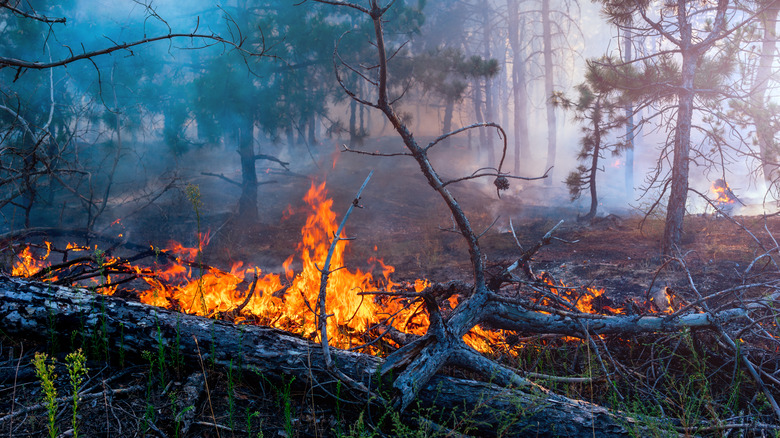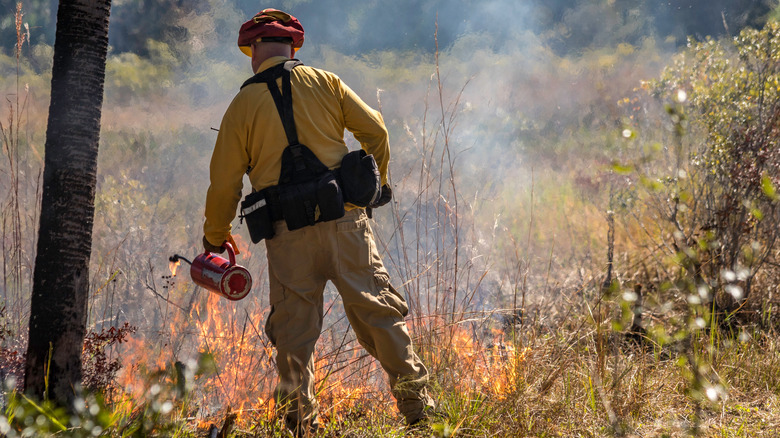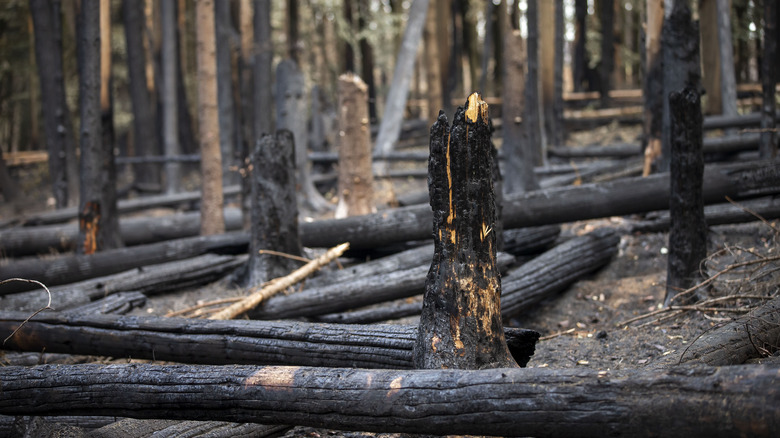What Is A Prescribed Burn, And How Can It Actually Prevent Extreme Wildfires?
According to the U.S. Environmental Protection Agency, the United States has an average of 70,000 wildfires per year. This can have a devastating impact on the environment, causing poor air quality and a loss of crops, property, resources, and most importantly, hurting and even killing animals and people (via the World Health Organization). Keeping wildfires under control is a top priority in dry, hot climates, which create the perfect conditions for fires to start. Keeping these fires from spreading can be tricky, so firefighters rely on unique methods for fire control.
Sometimes the best way to prevent wildfires from causing mass destruction is to intentionally start them. These types of fires, known as prescribed burns, are carefully calculated and ignited in controlled conditions to help prevent out-of-control wildfires and preserve historic sites (via the National Parks Service). But how do firefighters keep these prescribed burns under control. How do they function to improve the environment in which they are set?
Some fires can help to prevent environmental destruction
Wildfires, especially those caused by people, can quickly spread out of control. Yet sometimes naturally occurring wildfires can be a good thing for the areas in which they start. According to National Geographic, natural wildfires, such as those caused by lightning strikes, clear out dead organic material. This allows for regrowth, as young plants are no longer covered by layers of dead matter. Natural wildfires also remove low-lying underbrush, open up the forest floor to sunlight, and help to increase nutrients in the soil (via Cal Fire).
Prescribed burns work like natural wildfires, but can be planned in advance and kept inside designated areas more easily. Prescribed fires are used in many of the United States National Parks to "reduce hazardous fuel loads near developed areas, manage landscapes, restore natural woodlands, and for research purposes" (via the National Parks Service). These fires can be lit in several ways, including dropping firestarters using drones to make the process even safer, a method utilized by the Virginia Department of Forestry.
Wildfires caused by human activity can cause irreversible damage
While natural wildfires and prescribed burns can sometimes be beneficial for the environment, wildfires created by human activity can leave a negative impact on the areas in which they spread. According to the National Parks Service, as many as 85% of wildfires are caused by human activity. Wildfires can pollute water sources, reduce air quality, destroy vegetation, kill endangered wildlife, burn property, and more (via Earth.org).
Climate change has increased the risk and severity of wildfires, according to the U.S. Forest Service. This means that now it is more important than ever before to know how to prevent igniting one by accident. The U.S. Department of the Interior recommends practicing fire safety when camping, building campfires only in designated areas, and dousing campfires with water until they are cold when you are finished. It is also recommended to avoid activities that could cause sparks during hot, dry, and windy conditions. Check your local laws before lighting fireworks or starting bonfires, as these types of activities may be prohibited when the risk of starting a wildfire is high.


